An automated talent acquisition process equals a more effective hiring process (i.e., filling open positions with increasingly greater ease and efficiency). Plain and simple.
Of course, not every facet of your organization’s recruitment marketing, candidate engagement, or hiring decision-making can (or should) be automated.
That being said, many important, daily recruiting-related tasks can (and should) be put on autopilot, so to speak, through the the implementation of intelligent, automated workflows.
All in all, an automated talent acquisition process leads to improvements in productivity for talent acquisition specialists and collaboration with other hiring stakeholders (e.g., hiring managers, the HR department). And realizing these benefits leads to other advantages too.
Notably, the ability to:
- Reduce the number of manual TA tasks, which often takes a lot of time and resources
- Amplify candidate lead generation and speed up the disqualification of poor-fit prospects
- Outcompete other employers for top talent by evolving from reactive to proactive hiring
- Develop a more scalable and sustainable hiring program, thanks to predictive insights
- Ensure a high-quality candidate experience for both sourced talent and job applicants
As we’ve discussed, every company’s talent acquisition strategy is unique and custom-tailored to the respective growth goals and headcount needs decided on by their C-suites.
However, a near-universal commonality among employers today is the application of an automated talent acquisition process — on that routinely enhances the ROI from their sourcing, nurturing, interviewing, and hiring efforts.
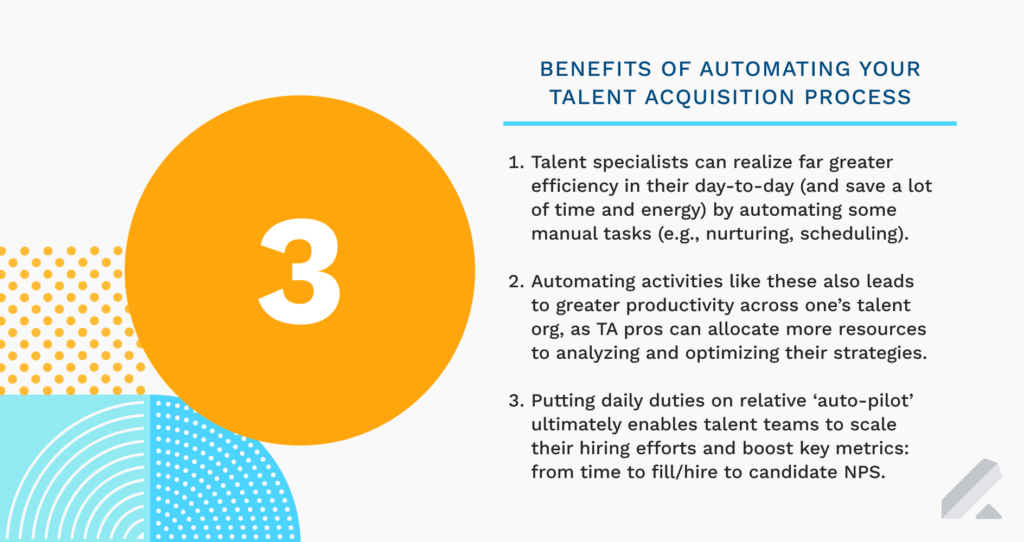
7 innovative ways to infuse advanced automation in your talent acquisition process
Even the most successful talent acquisition and recruitment teams still have tasks they must handle mostly (if not entirely) manually: from writing and revamping job descriptions, to evaluating the skill sets, experience levels, and overall qualifications of potential candidates.
However, the most effective TA processes factor in automation to tackle tasks like these (and make the lives of talent acquisition managers and specialists much easier).
That’s not to say automation takes the human element out of finding, engaging, evaluating, and extending offers to leads. Rather, it means simplifying the daily duties tied to these aspects of recruiting and hiring.
“Recruiting talent and bringing new people into an organization will always be a human-centric job,” human resources professional Natalie Fell recently explained to SHRM.
That said, there seven ways in which you can use automation capabilities — ideally those offered by an advanced ATS + CRM solution — to realize a much more effective talent acquisition process that boosts your recruiters’ output and leads to a smoother hiring process.
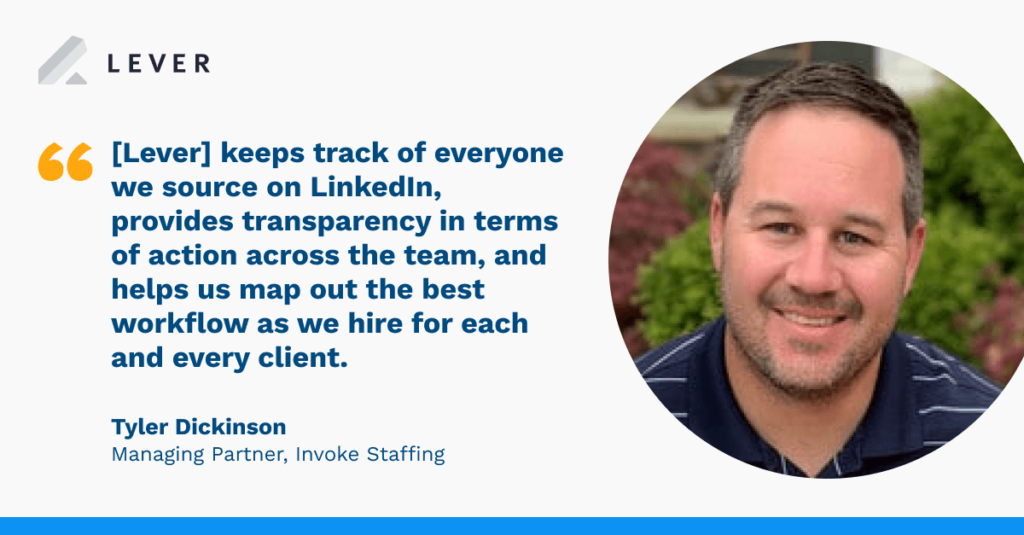
1) Connect critical tools in your TA/HR tech stack to your candidate database
The best-in-class full-cycle recruiting programs use leading HR and TA technologies.
These teams’ mutual goal of providing a top-tier CX is only possible when they use said tech in tandem to communicate with candidates, onboard new hires, and get feedback regarding the entire interview process.
With a complete TA suite like LeverTRM, talent orgs can integrate the solutions they use in their day-to-day (e.g., applicant screening software, candidate feedback platforms, referral systems, bias-elimination tools).
Moreover, they can sync LeverTRM with their HCM/HRIS, people operations software, workforce analytics solutions, and other popular human resources platforms.
This kind of interconnected tech ecosystem enables smarter and faster hiring for talent acquisition teams (e.g., real-time syncs of requisition and candidate profile data, custom notifications for key stakeholders).
Just as important, it augments HR’s onboarding processes. Once new hires are made by hiring teams, their info can be sent from LeverTRM directly into the HR’s main workforce database.
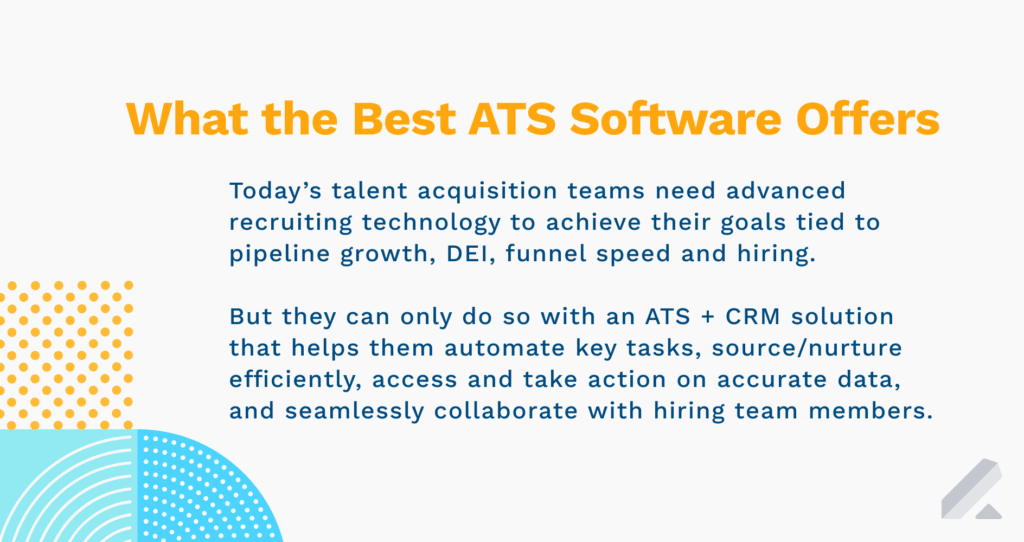
2) Ensure only the most relevant resumes and applications make it to you for review
Maybe you only want to hire candidates for short-term work (i.e., part-time and/or seasonal workers). Or, maybe you need long-term, full-time workers to fill managerial and leadership roles across your business.
Regardless of the specific type of job seeker you’re looking to employ, you can ensure only the most pertinent candidates with the requisite qualifications are sent to you for evaluation by leveraging automation.
For example, Lever customers can set up application workflows in LeverTRM.
This rules-based workflow ensures only applicants who meet a pre-defined list of criteria (e.g., number of years working in a given role, highest level of education, specific certifications related to their field, location) make it in front of recruiters for review.
These auto-screening rules — along with our Fast Resume Review functionality — help TA teams that receive hundreds or thousands of applications weekly, as they automatically filter out candidates who simply don’t align with the needs for an active role.

3) Automatically archive candidates who weren’t made or rejected offers
Even if a given applicant doesn’t end up being a good fit, that doesn’t mean they should be forgotten about forever. On the contrary: They should be archived to revisit later.
Archiving applicants — along with prospects who withdrew from consideration and candidates who were sourced but never interviewed — can be accomplished both manually and via automated workflows in Lever.
In many cases, answers to knockout questions inform whether a given candidate gets auto-archived or moved to the next stage of the recruiting process (i.e., screen to first interview).
Many LeverTRM users also auto-send emails to archived leads to inform them they won’t be considered for the role they applied for at that time.
Once archived, LeverTRM users can assign tags to candidates and specific reasons for passing on them (e.g., low feedback score, lack of experience, not the right time to hire for that role).
These labels can come in handy weeks, months, or even years down the line, should these TA teams need to identify qualified candidates already in their database for new roles.
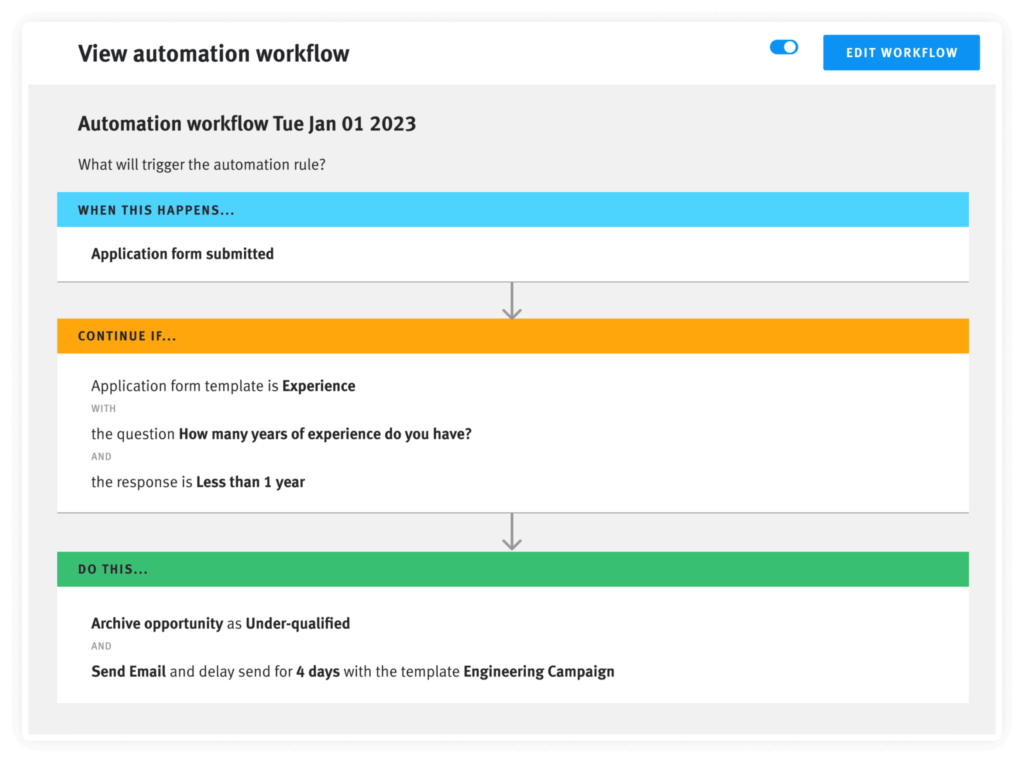
4) Build customized nurture campaigns for prospects of interest
From freshly sourced talent you deem perfect fits for open roles to inactive leads you haven’t heard from or engaged with in some time, automated candidate nurtures can help you engage and stay top of mind and in touch with with all prospects of interest with ease.
Passive candidates, in particular, are ideal for targeted nurture campaigns.
With LeverTRM, you can set up a custom email cadence and schedule (e.g., four email touchpoints over a two-month span) that can be sent to prospects when added to the nurture campaign in question.
If a campaign concludes without a reply from a prospective hire, you can archive them automatically. This helps you keep your pipeline clean. It also allows you to focus on nurturing active candidates who are likelier to convert.
Nurture campaigns can be set up for a single prospect or group of candidates in LeverTRM. The former approach allows for truly individualized messaging.
However, even nurtures geared toward a broad talent segment (e.g., 10 sourced candidates you’ve identified as qualified for a given role) allow for personalized messaging.
For instance, you can auto-insert details (e.g., name, current or past job title, and company) for each person in a “bulk” nurture campaign so each person gets a personalized version of each email incorporated in the campaign.
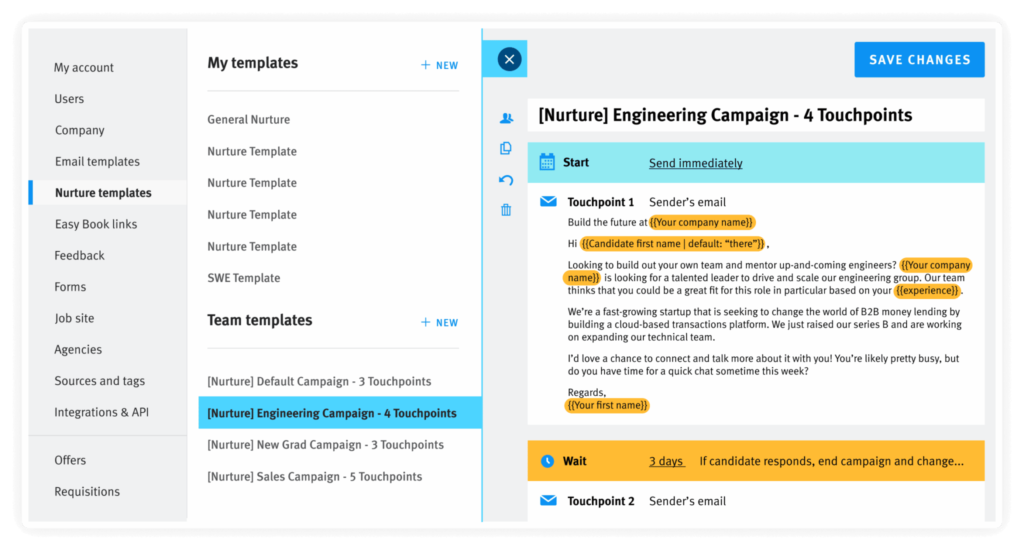
5) Alert stakeholders of changes to a requisition or candidate’s status
Amid their sourcing, nurturing, and interviewing, it can be easy for TA pros to forget to keep relevant internal stakeholders in the loop about the latest status for specific prospects.
With the right tech in place, though, these critical status updates can be shared with these stakeholders (i.e., other talent specialists, hiring managers, business leaders) automatically.
That means it’s one less task recruiters need to worry about in their day-to-day.
Let’s say you have five stages in your org’s typical interview process.
If you have LeverTRM, you could ensure emails were automatically sent to hiring managers to inform them of the stage change as well as all related context about and reasons for the stage progression or regression (e.g., high feedback scores, passing of role-based assessment).
It’s not just TA specialists who can keep hiring managers abreast of candidate status changes. The latter can use LeverTRM’s automated workflows to keep the former up to speed on changes regarding a requisition (e.g., a new hiring deadline, job description changes).
(Side note: Integrations with popular communication apps like Slack also make it easy for TA teams and hiring managers with LeverTRM to stay on the same page regarding candidates. Lever customers often use Slack to remind interviewers to provide feedback, notify them of interview schedule changes, and relay when a hire has been made.)
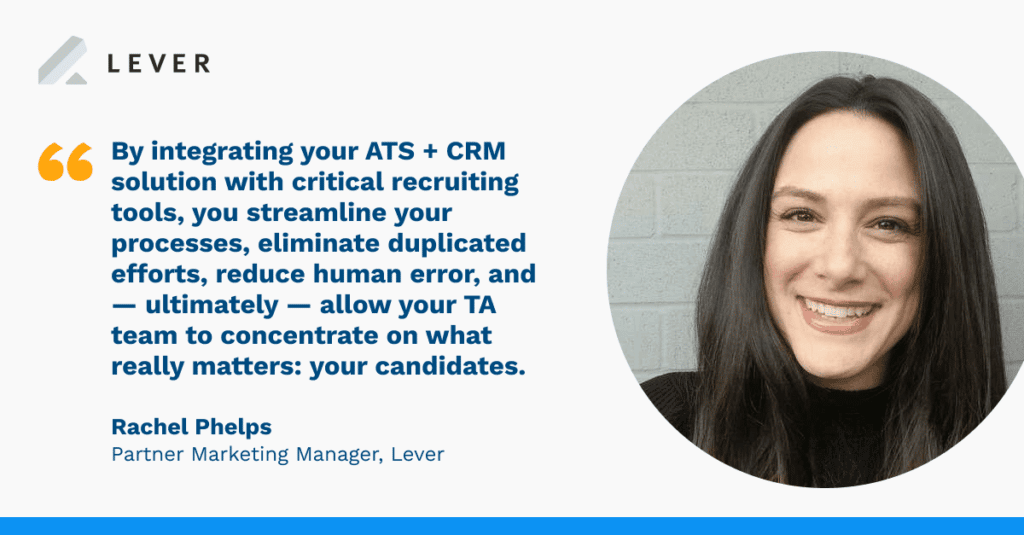
6) Book interviews with top candidates using automated scheduling
Putting holds on interview panelists’ calendars during times they can all meet with candidates, then ensuring candidates themselves are available during at least one of those periods used to be painstaking for talent orgs.
Today, it can fully streamlined within your talent acquisition process. Consider LeverTRM users: Our Easy Book functionality syncs with each interview panelist’s calendar.
This allows TA pros with our ATS + CRM solution who are charged with scheduling interviews with individuals to only provide them with times every panelist is available to meet.
With just a few clicks (and, often, in a matter of a minute or less), candidates who get promotional emails from Lever customers can self-schedule their interviews and receive email confirmation and reminders.
On top of automating scheduling, TA orgs with LeverTRM can also arrange the order in which each interview panel member will speak with prospects and how long each interview should last. via our interview planning feature.
After each interview, panelists then share feedback through feedback forms in the interview plan created for the role. All panelists receive the same form with the same questions regarding their thoughts on a candidate.
All this adds up to a structured, consistent interview process — a benefit for interviewers (organized candidate engagement) and interviewees (a great candidate experience).
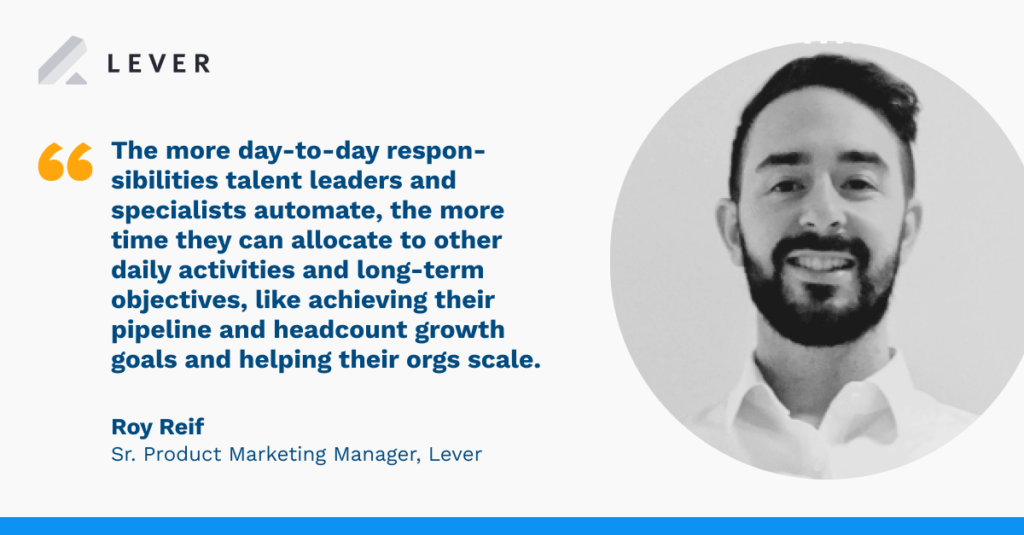
7) Auto-send surveys to candidates to determine the quality of their CX
Securing feedback from internal stakeholders on candidates is a must. But don’t forget the value of asking candidates to evaluate your interview team and share their thoughts on their interview experience at large.
Whether you use a dedicated CX platform like Starred, which integrates with Lever, or our built-in candidate experience surveys like those offered in our TA suite, you can automate the process of getting candidates to offer their assessment of your brand and recruiting approach.
With LeverTRM, users determine the questions they want to ask candidates (this usually differs by role and/or team) as well as the delivery criteria (i.e., to whom and when surveys are sent) and they’re set up for CX success.
Find out how 5,000+ Lever customers use our recruiting automation capabilities to continually refine their funnels and work smarter, not harder. Get a LeverTRM demo today.



